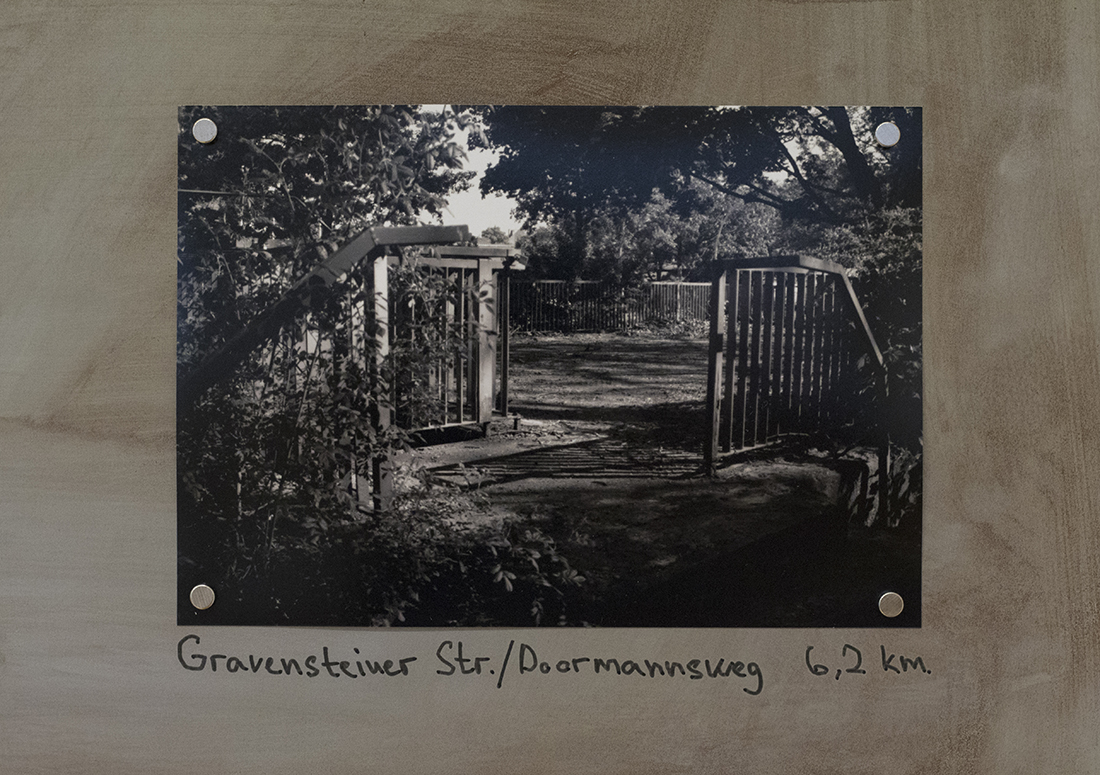BUNKERSTADT, 2022
40x60, steel plate, 6 photos 10x15, digital print
The threat of nuclear war is now greater than ever; that is why I was interested in shelters in Hamburg in case it happens. It turned out that it is the city with the most significant number of bunkers in Europe. There were about 1,200 of them built, and about half are still standing. Most of them were made in the early 1940s. In 1943, Hamburg was heavily bombed. According to various estimates, 40 to 50 thousand people were killed, and most of the city was destroyed.
During the Cold War, in the 1960s, Germany began building underground bunkers to be used in case of nuclear war. The first such bunker is near Berliner Tor station, a 5-minute walk from my house. Most retired bunkers can no longer be used for their intended purpose. Some have been demolished, and some have been rebuilt and are being used as apartments. Others are warehouses, music bases, restaurants, hotels, clubs, or garages. The most famous bunker in the city, on Feldstrasse, was erected by concentration camp prisoners. Now a colossal garden is being made on its roof.
On the bunkers appeared imprints of time made by man or nature. I wanted to capture the moment of these changes in the photographs. The photos were mounted on a steel plate, exhibiting rust over time. The address where the bunker is located and its distance from my house is written under the photos.







